The Tiny Coastal Island that Changed British History forever
Ruined abbeys, sea birds, and salty shores on Lindisfarne Holy Island
The ice cold water of the north sea laps against jagged rocks. Upturned boat sheds sit encrusted with sea salt, and gulls cry out in the sky as they circle the islands in search of fish. Wildflowers and seagrass nod in the breeze; helleborine, wintergreen, and lurid pink orchids vivid against the muted tones of the dunes. Further out, grey seals recline on the white shore, sand coating their fur, gazing up at the endless blue sky.
Prefer to watch a video? Check out the vlog here.
Lindisfarne, or Holy Island, is a small island off the Northumbrian coast, accessible by a road that is hidden when the tide comes in. When the water rises, the road is completely submerged underwater, leaving the island cut off from the world.
This island, despite its small size, is arguably one of the most important locations in British history, as it provided one of the key bases for Christianity to spread, and was the site of a horrific attack that played a key role in starting the Viking Era in Britain.
It’s around 10:30am when we reach the island of Lindisfarne. I have triple-checked tide times, just in case my brain decided to shut down and be unable to read numbers the previous two times I checked already (it has been known to happen). We get to the causeway and all is well. Aside the road, sand dunes rise and fall in great mounds, dappled puddles of sea water interspersed throughout. Grass and other sea plants I cannot name grow impossibly despite being underwater for half of their life.
We chose a good day for it. It’s late March, and the air is still cool, but the sun is out and oh is he warm. I breathe in deeply, the sea breeze carrying that scent of brine and seaweed so strong you can stick out your tongue and taste the salt. Being from the North East, there is something about the sea that will always feel like home to me. That sickly smell of fish and saltwater stirs a sense of belonging that is ancestral, and even more so when I visit this island.
For such a small place, there are endless things to see on Lindisfarne, from the castle to the priory, museums, cafes, shops, and even just the wildlife and flora. To understand why this place is so special, we need to go back to the beginning.
The seat of Christianity
In 634AD, a monk named Aidan was asked by King Oswald to establish himself here and spread Christianity to the surrounding area. Another Bishop had gone before, and his missionary methods were too harsh, and his efforts were not met with success. Aidan, however, was gentle and kind, and would wander the local villages and talk with people casually. His work was well-received, and he began the spread of the gospel in this area, founding the monastery here on the island for others to come and live.
Even more well known than Aidan is the monk Cuthbert, who ostensibly had a vision on the night Aidan died in 451, causing him to give up his previous life and become a monk. He came to Holy Island, and began the work of spreading Christianity, performing miracles, tending to the island and caring for those who came across it.
There are many lovely tales surrounding Cuthbert, but probably my favourite are those detailing his fondness for animals. He was connected with the seabirds and wildlife of the island, and he actually set up the first laws to protect the birds of the Farne Islands which surround Lindisfarne. There’s also a story about a monk that followed him out one night, and saw him stood in the moonlight, feet in the sea, praying to the Lord. It is said that the otters would come up to him, and warm his feet as he stood. Even now as we peruse the gift shops on the island, there are various postcards and pieces of art showing St Cuthbert surrounded by otters and birds.
Later in life, Cuthbert became a hermit one of the smaller islands, only opening a window to give blessings, and keeping to a quiet life for a while. Being on the island, surrounded by blue skies and sea, hearing the call of the birds and feeling the salt breeze in the air, I understand why people were drawn to this place, and why Cuthbert would seek a life of solitude here.
I think there’s something to be said for the heritage of a place. We talk about feeling the ‘energy’ of a space when we’re in it, sensing the experiences of others who have gone before. So many men found peace, faith and purpose on this island, and I feel that comes through when you are here.
The Viking Era
But the island’s peace did not last forever. In 793AD, Lindisfarne was attacked by a Viking raid. It’s easy for us now to think of Vikings and conjure up images of bearded men waving their swords, drinking ales and singing together. They’re ‘cool’ now, something to even aspire to for many people, but I think it’s important to remember the reality of these raids. Even in the gift shops on the island, you can buy various nick-nacks such as mugs and tea towels with goofy viking illustrations on. I find this a little odd given the impact of vikings on Lindisfarne, though I do understand how we could have such a disconnect.
The Anglo-Saxon Chronicle notes: “793. Here terrible portents came about over the land of Northumbria, and miserably frightened the people: these were period flashes of lightning, and fiery dragons were seen flying in the air. A great famine immediately followed these signs, and a little after that in the same year on 8 January the raiding of heathen men miserably devastated God’s church in Lindisfarne island by looting and slaughter.”
In the same year, scholar and priest Alcuin described the event. “…heathens desecrated God’s sanctuaries, and poured the blood of saints within the compass of the altar, destroyed the house of our hope, trampled the bodies of saints in God’s temple like animal dung in the street …’”
It’s harrowing to imagine the experience of the monks as this event took place. Many were killed, many were stripped naked and humiliated or even sold into slavery. I wonder how many were made to watch as their friends were brutally massacred, or how many tried to flee or fight. It must have been a terrifying ordeal.
St Cuthbert’s body was eventually moved to keep it safe, and it ended up in Durham where it essentially founded the cathedral, and by extension, the city of Durham itself.
Lindisfarne Castle
Henry VIII of course came along and suppressed the priory, and his troops used the remains as a naval store. In 1542 under Henry’s orders, the site was fortified against possible Scottish invasion. In 1549, a fort was built on a high rock known as Beblowe, the highest point of the island in a strategic location which then became Lindisfarne Castle. In the eighteenth century, the castle was occupied briefly by Jacobite rebels, but was quickly recaptured by soldiers from Berwick who imprisoned the rebels.
We walked up the grassy hill towards the castle, which is now owned by the National Trust, and decided to pay it a visit. The castle became the property of Edward Hudson in 1901 (the founder of Country Life magazine, which you can still buy today). He had it refurbished by a man named Sir Edwin Lutyens, and all around the castle you can see the original furnishings, architectural drawings and excerpts from their diaries.
There were some slightly unusual (and highly personal) diary entries on display for the world to see, including what seemed to be a cause of tension between Hudson and Lutyens as they both were apparently in love with a cellist by the name of Suggia who spent a lot of time at the castle.
Lutyens would probably be mortified to know that his private diary entries sniping over the way Hudson looked at Suggia were plastered all over the world for the public to read, but that is history I guess!
It may be small, but there is still an thriving community on Lindisfarne, with gift shops, pubs, restaurant and churches. We stopped for a coffee at Pilgrim’s Coffee shop, which was pricey but worth every penny, and sat and ate our sandwiches as we watched the tiny sparrows arguing with one another and fighting for scraps. The birds on the island have grown rather accustomed to humans, and they are not concerned with getting very close and even eating out of your hand.
As we wandered the little pathways, we saw many seaside cottages with spring flowers bursting from pots outside brightly painted doors, posters advertising events from Celtic bands to church fairs. Unfortunately, the Lindisfarne Centre was closed, but there a plenty of little craft shops to explore, including the Lindisfarne Mead shop.
Checking the tide time once more, we made sure to set off in ample time so we could leave the island before there was a rush of everyone trying to get off at once. It’s strange to think that such a tiny island in Northumberland could have had such an impact on British history, but when you think of the power of the spread of Christianity and how that has impacted every single thing that has happened since, as well as the lasting legacy of the Viking Age, it’s clear that the happenings on this island contributed greatly.
The Northumberland coast is a truly special place, you could spend days exploring the castles that are a stone’s throw away from one another such as Bamburgh, Dunstanburgh, Warkworth, and even Alnwick. If you get the chance, I highly recommend paying this magical place a visit.
Enjoyed this post? Supporting my work as a paid subscriber gives you access to hidden posts, and means I can keep continuing to share writing and videos with you. Thank you!


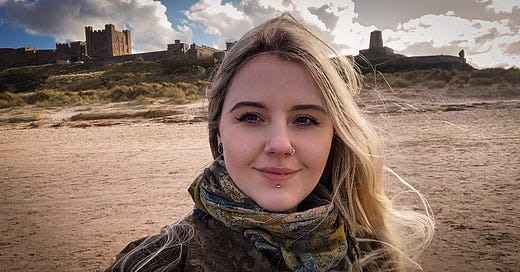


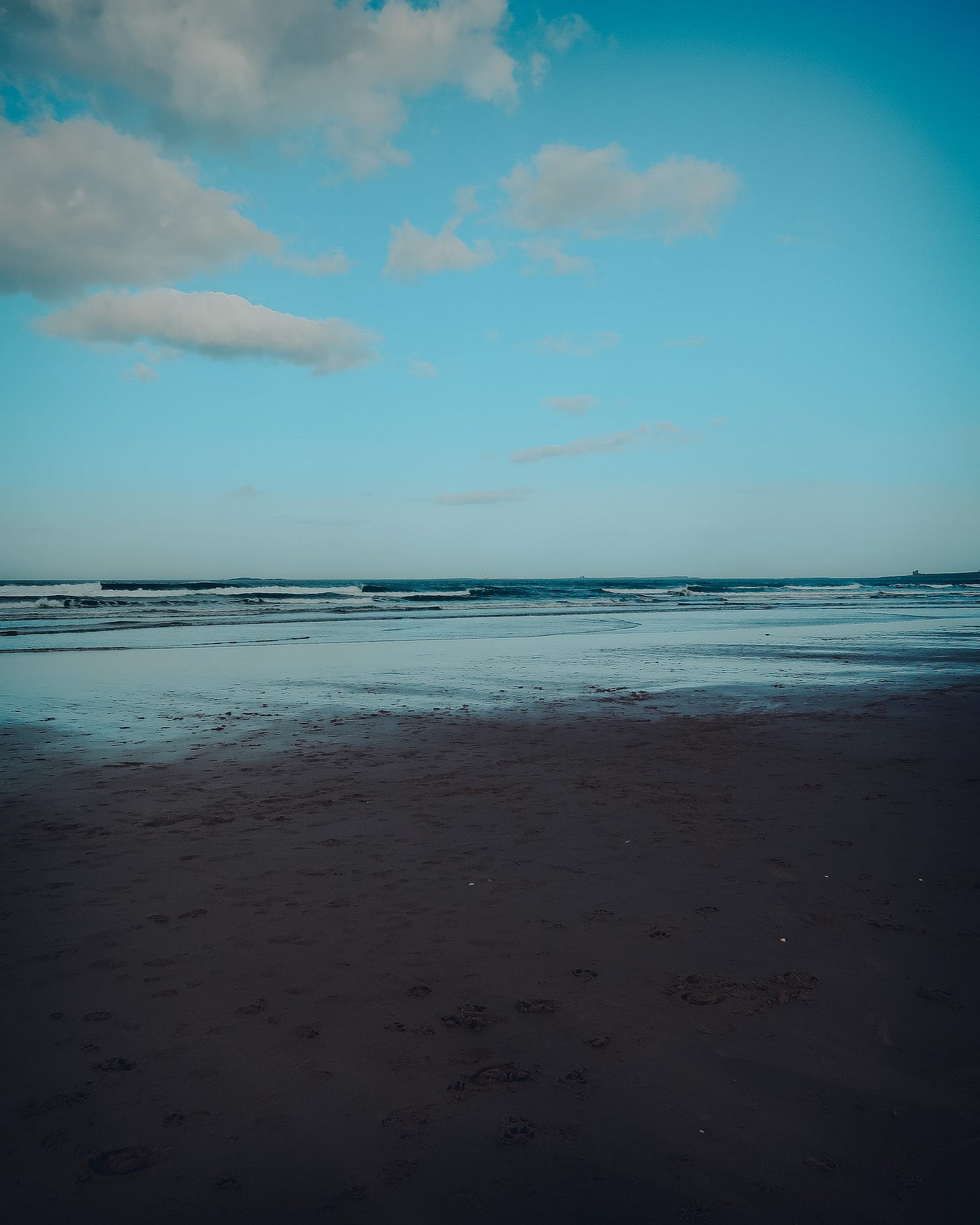

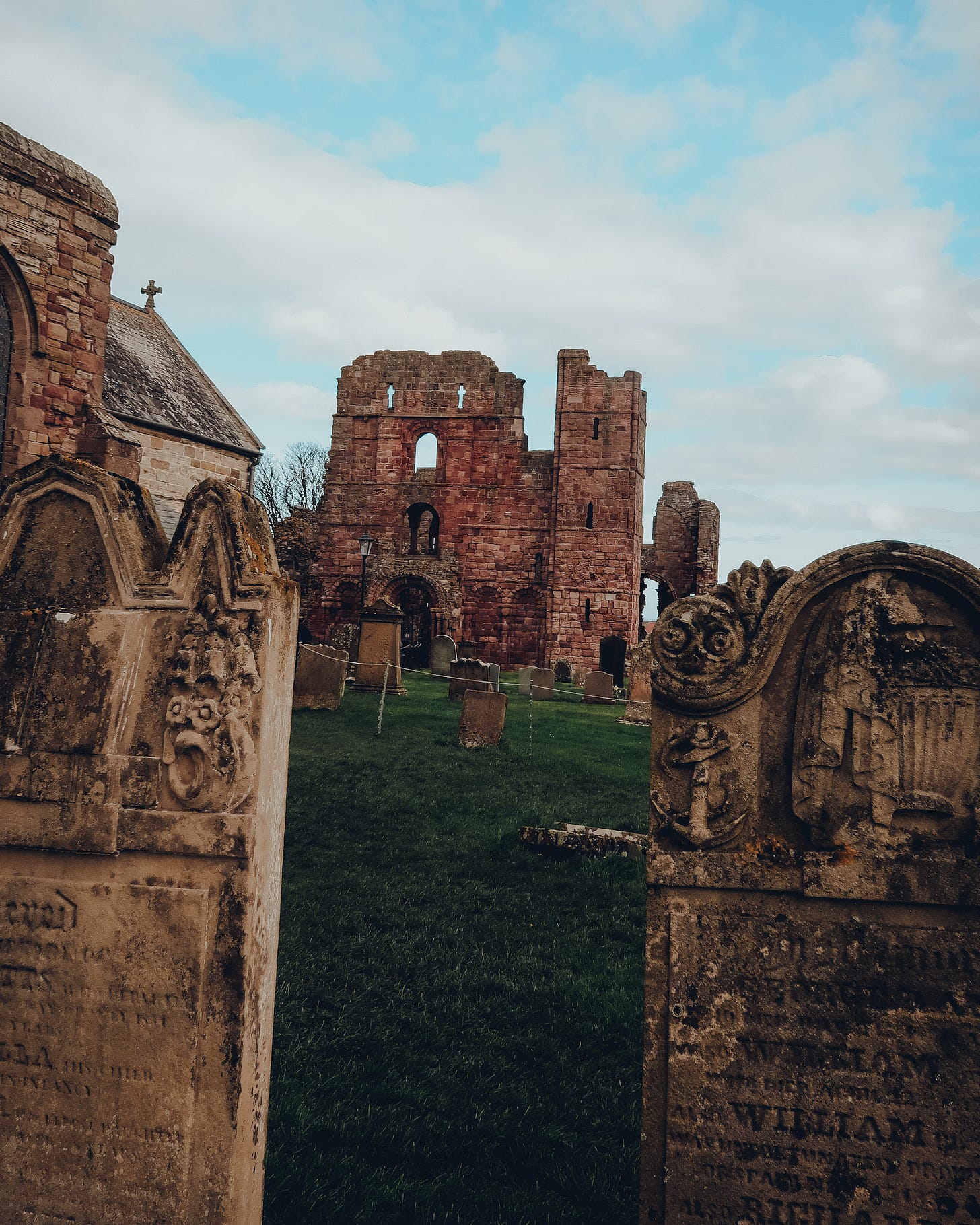
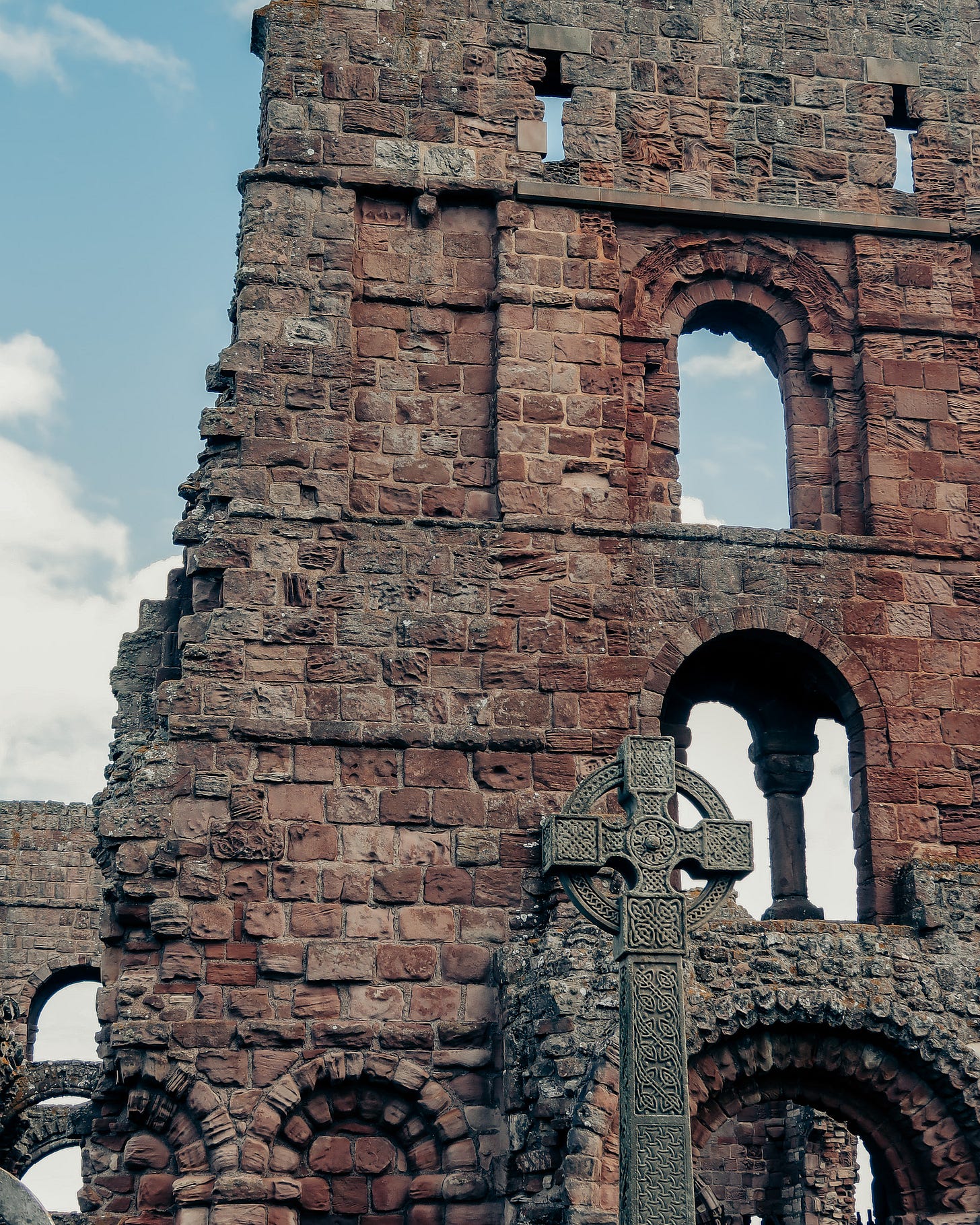
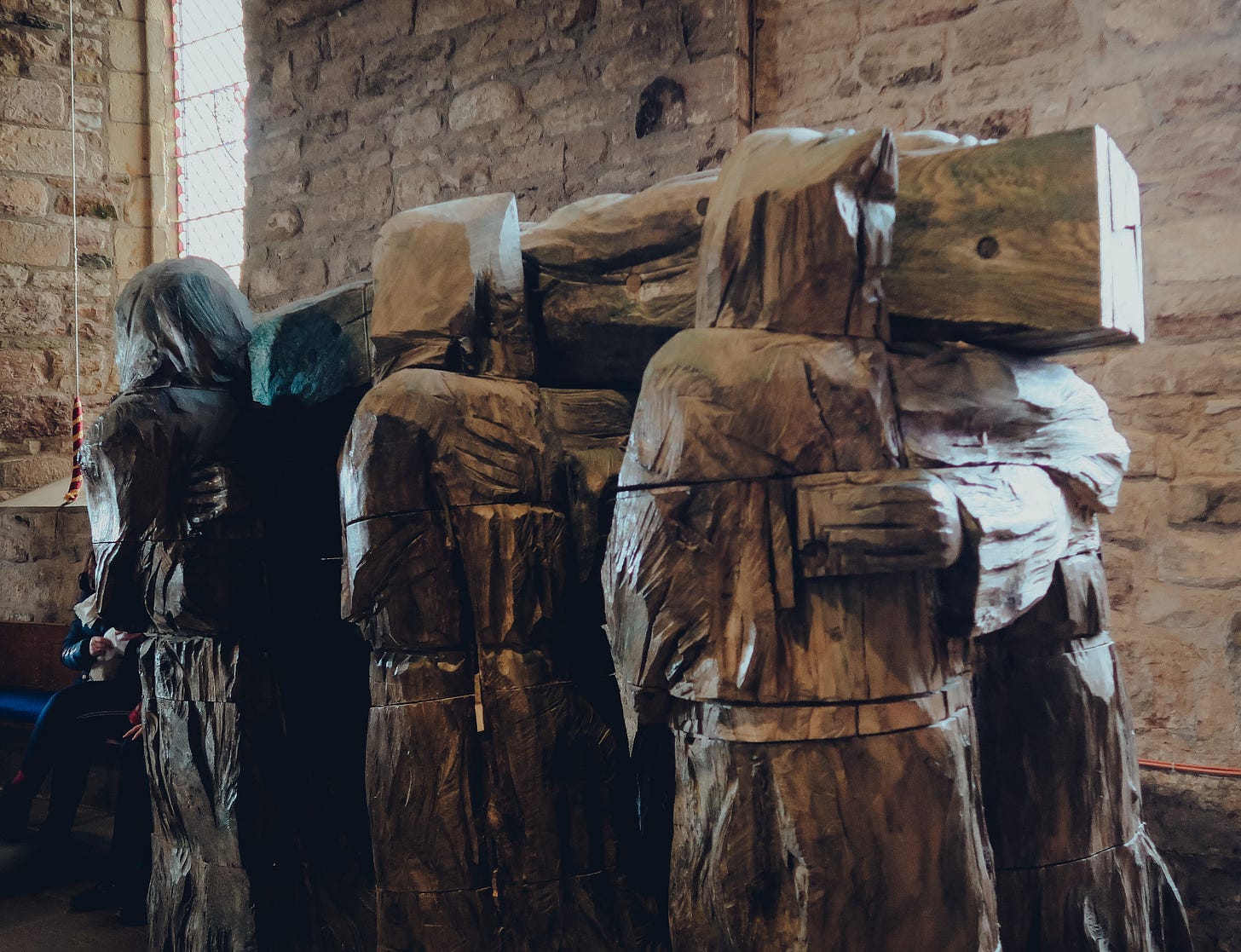
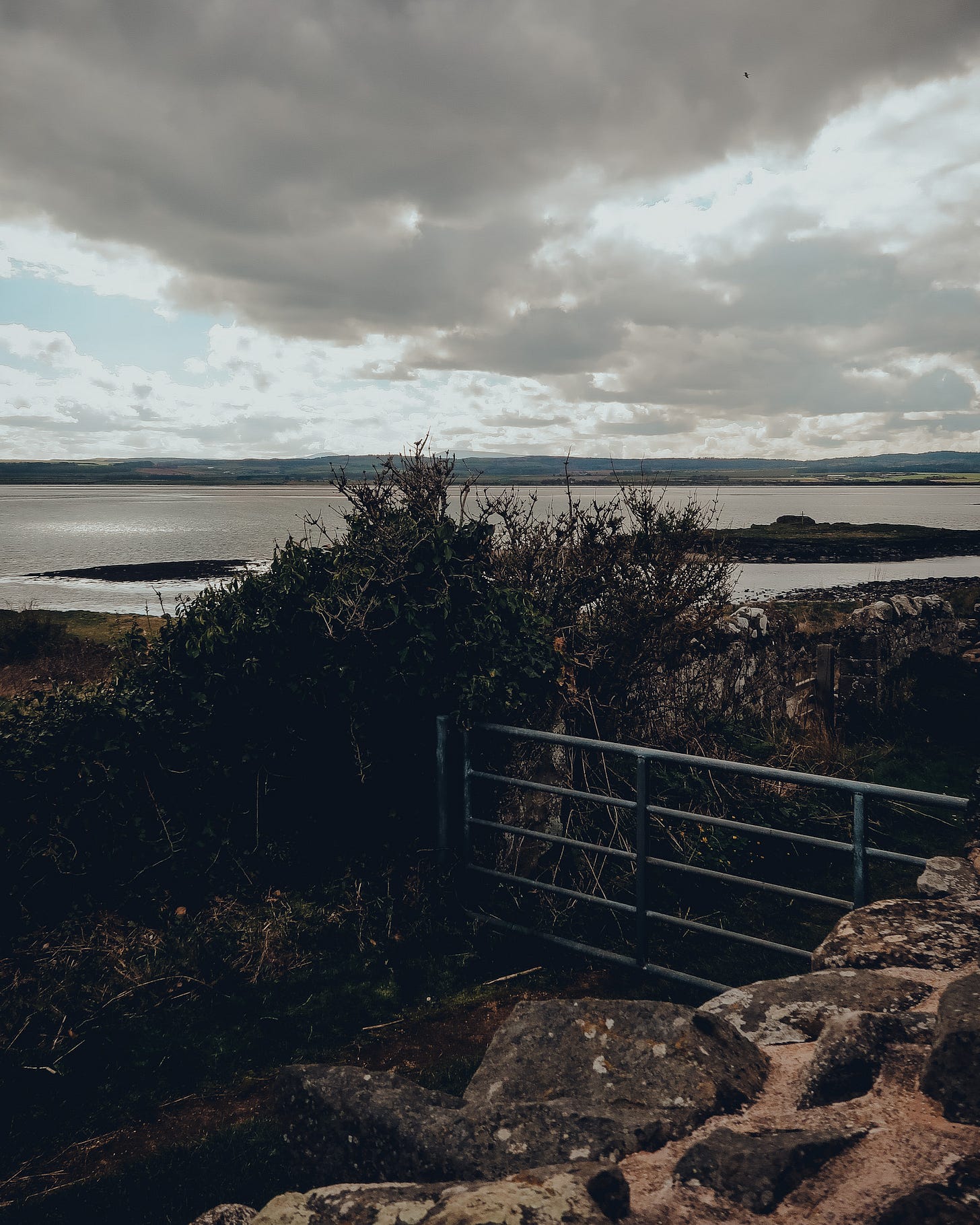
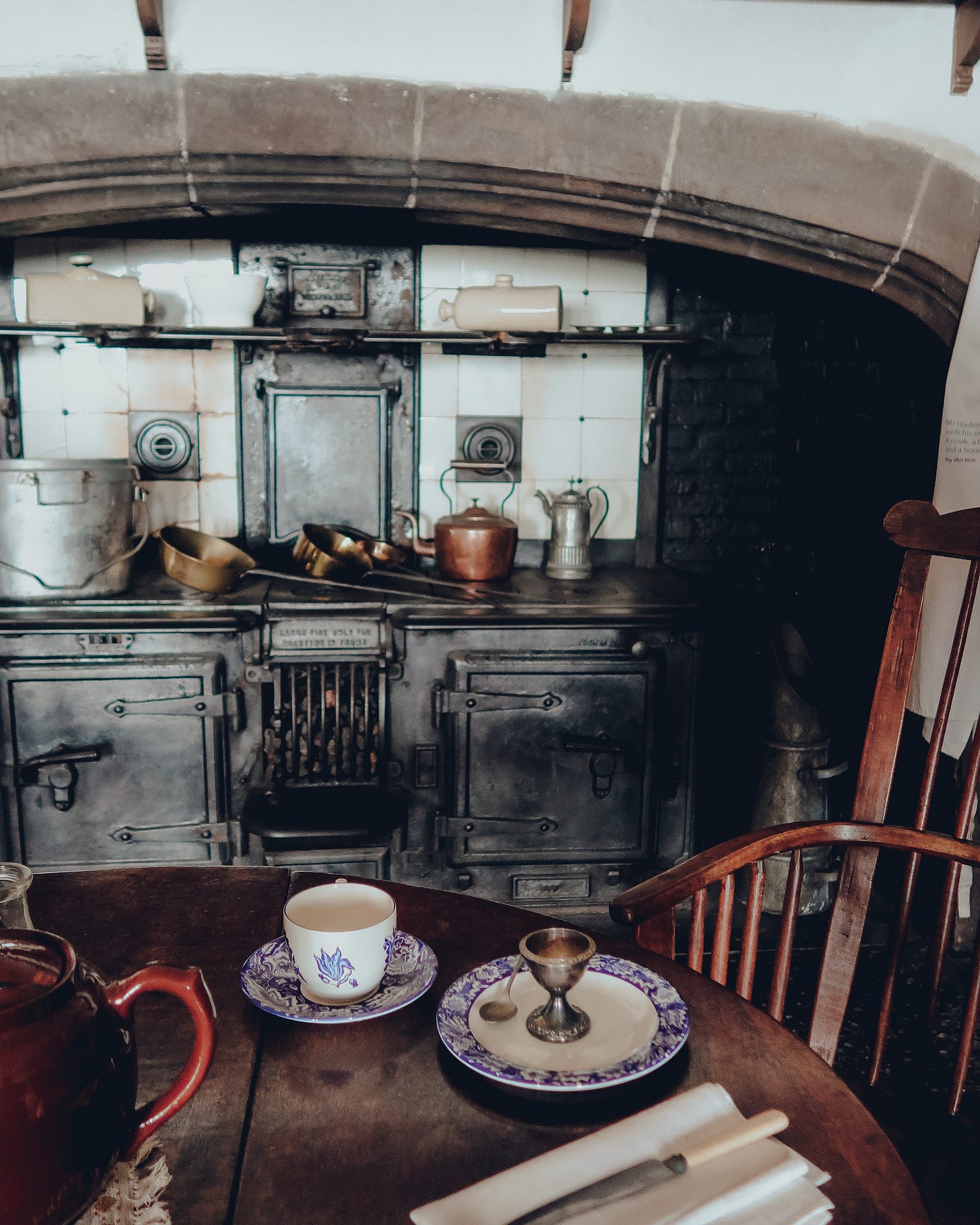

Omg this was a joy to read, love visiting Lindisfarne, you can tell how steeped in history and mythology that area of the coast is. Need more of your travel/history scribblings like this!